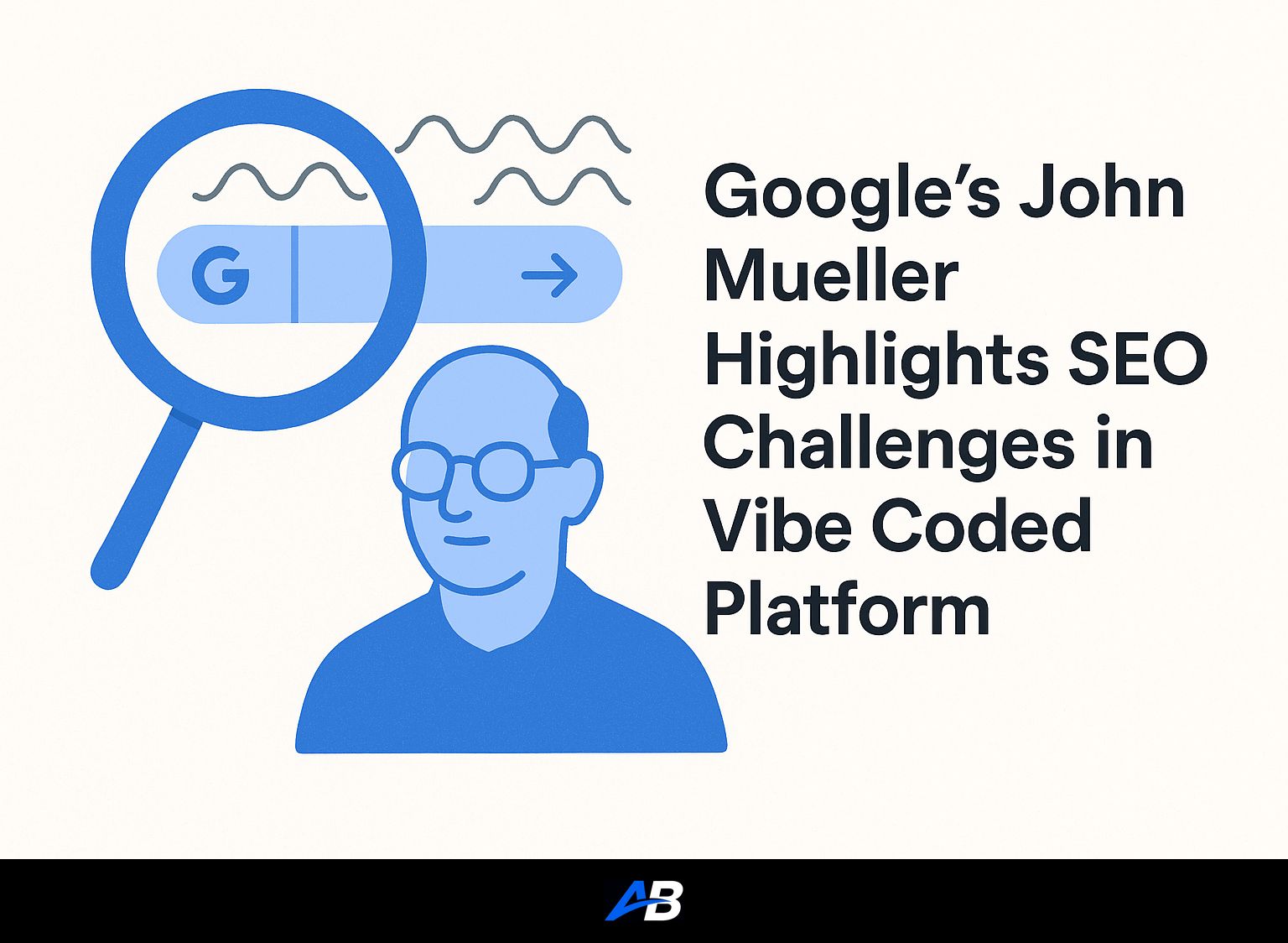
In a recent discussion, Google’s John Mueller shared insights regarding the SEO challenges posed by Vibe-coded websites. This has raised alarms among SEO professionals who are navigating the evolving landscape of digital visibility.
Short Summary:
- SEO issues are surfacing with Vibe-coded websites, raising concerns in the SEO community.
- While Vibe coding provides design flexibility, it may overlook essential SEO practices.
- Industries heavily using visual content must adapt to optimize their Vibe-coded platforms.
In the constantly changing realm of search engine optimization (SEO), having the latest information is crucial for professionals eager to keep their websites visible online. Recently, Google’s John Mueller shed light on an alarming issue concerning websites built with Vibe coding—a topic that’s capturing the attention of digital marketers and SEO experts alike.
Understanding Vibe Coding
At the heart of this discussion lies the concept of Vibe coding. Developed to create visually dynamic and interactive user experiences, Vibe coding allows designers to craft stunning web interfaces. However, as John Mueller cautioned, this design freedom often translates into a neglect of fundamental SEO principles. Historical patterns have shown that when new coding trends appear, they frequently challenge existing SEO strategies. Vibe coding is reminiscent of the SEO upheaval witnessed during the adoption of technologies like Flash or complicated JavaScript frameworks, where search engines struggled to crawl and index content effectively.
The Genesis of the Problem
Mueller’s insights emerged from recurrent feedback on online forums and extensive site audits conducted by Google. As a growing number of developers gravitate toward Vibe coding for its aesthetic appeal, the urgency for Google to address the associated SEO risks escalates. This initiative aligns with Google’s ongoing efforts to enhance user search experiences, prioritizing the visibility of relevant and accessible content in search results.
Risk Exposure Across Valued Industries
The ramifications of Vibe coding are far-reaching, affecting various sectors including fashion, entertainment, and other visually-driven industries. As these businesses progressively leverage Vibe coding, they may inadvertently put their search visibility at stake. The potential fallout includes plummeting search rankings and diminished organic traffic—trends that demand urgent reevaluation of strategies.
Expert Advice from Digital Marketing Professionals
In light of the concerns raised about Vibe coding, Sunil Pratap Singh offers pivotal advice for businesses and developers:
- Conduct Comprehensive SEO Audits: Regularly review your website for discrepancies between coding practices and SEO best practices. Utilize robust tools to track broken links, missing alt tags, and header discrepancies.
- Focus on Mobile Optimization: Ensure that your Vibe-coded website is fully compliant with mobile-first indexing policies, a critical factor in organic rankings.
- Prioritize Core Web Vitals: Google emphasizes the importance of loading performance, interactivity, and visual stability—key metrics all websites must meet to rank well.
- Enhance Content Accessibility: While design is integral, priority must be given to tagging visual elements correctly and providing text-based alternatives for all content.
- Engagement with SEO Communities: Stay connected with advancements and insights shared in SEO forums and communities, as they often shine a light on emerging issues and solutions.
- Consult SEO Specialists: Regular interactions with SEO professionals knowledgeable about the nuances of Vibe coding can provide crucial insights into adhering to best practices.
FAQs About Vibe Coding and Its SEO Implications
To further inform our readers, here are some commonly asked questions concerning Vibe coding and its SEO impact:
Q1: What exactly is Vibe coding, and why should SEO professionals care?
A1: Vibe coding emphasizes aesthetic and interactive components in web design, but if not optimized properly, it may undermine crucial SEO elements, adversely affecting search rankings.
Q2: How can ignoring SEO practices in Vibe coding affect a website?
A2: Websites lacking proper SEO optimization while utilizing Vibe coding could experience lower visibility in search engine results, resulting in reduced traffic and engagement.
Q3: What steps should I take to ensure my Vibe-coded website adheres to SEO standards?
A3: Execute in-depth SEO audits, ensure mobile-friendliness, prioritize Core Web Vitals, enhance content accessibility, engage with SEO communities, and consult experts proficient in Vibe coding.
Q4: Is Vibe coding universally applicable for all website types?
A4: While appealing to the eye, using Vibe coding may not be suitable for websites where SEO-driven traffic is a pivotal focus unless they are meticulously optimized for search engines.
Q5: Does Google penalize websites using Vibe coding?
A5: Google doesn’t necessarily penalize Vibe-coded sites, but failure to include essential SEO elements may result in lower prioritization in search results.
Q6: Should I switch to a different framework from Vibe coding?
A6: Instead of completely abandoning Vibe coding, prioritize incorporating effective SEO strategies into existing frameworks to enhance ranking performance.
Conclusion
The insights shared by John Mueller regarding Vibe coding underline the significance of striking a balance between web design and essential SEO practices. By remaining vigilant and pro-active, businesses and developers can ensure their stunning websites both captivate users and secure favorable search rankings. Successfully navigating these challenges will necessitate an unwavering commitment to regular audits and a dedication to leveraging expert guidance, ultimately positioning them for long-term SEO success.
As the digital landscape continues to evolve rapidly, so too must our strategies and tools. Staying abreast of the latest trends is vital, and solutions like the Autoblogging.ai platform offer advanced features for automating article generation with built-in SEO optimization, ensuring you don’t fall behind in this competitive field.
Do you need SEO Optimized AI Articles?
Autoblogging.ai is built by SEOs, for SEOs!
Get 30 article credits!


